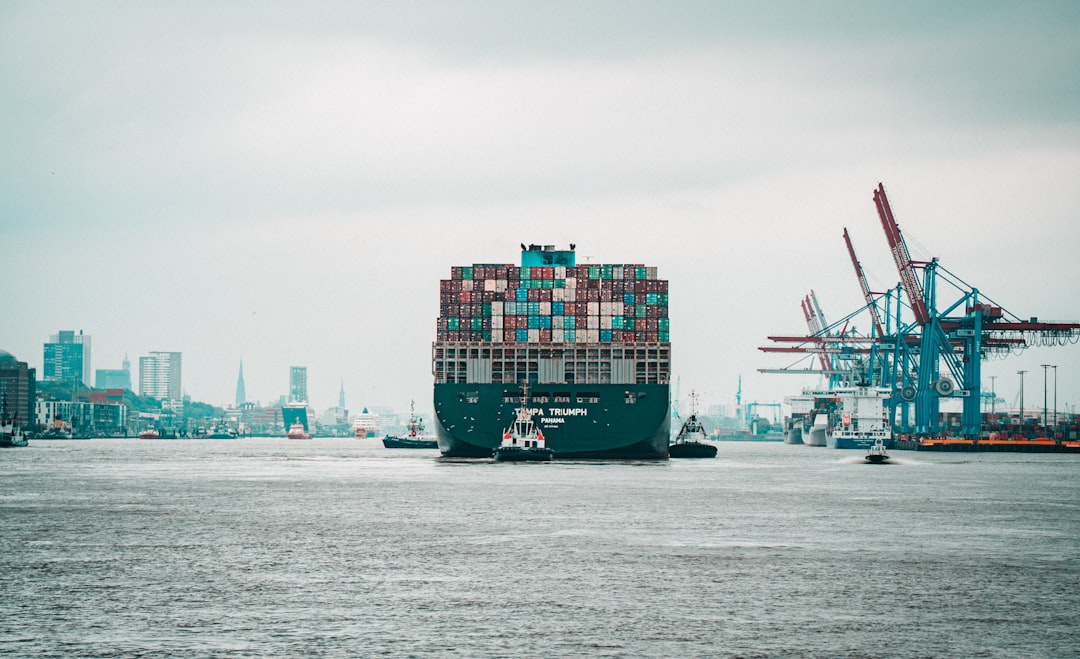Economics is a multifaceted social science that delves into the production, distribution, and consumption of goods and services.
At its core, economics examines the choices made by various agents in society and the implications of those choices on overall welfare.
The discipline is not merely about money or wealth; it encompasses a broader understanding of how resources are utilized and how they can be optimized to improve living standards. The study of economics is essential for grasping the complexities of modern society. It provides insights into how markets function, how prices are determined, and how economic policies can influence behavior.
By analyzing economic systems, we can better understand the factors that drive growth, innovation, and social change. Furthermore, economics plays a crucial role in addressing pressing global issues such as poverty, inequality, and environmental degradation. As we navigate an increasingly interconnected world, the principles of economics become vital tools for making informed decisions that affect both local communities and the global landscape.
Key Takeaways
- Economics is the social science that studies how individuals, businesses, and governments allocate resources to satisfy their needs and wants.
- The basic principles of economics include supply and demand, scarcity, and opportunity cost, which are fundamental to understanding how markets function.
- The role of government in economic systems involves regulation, taxation, and fiscal policy to ensure stability and promote economic growth.
- There are different types of economic systems, including capitalism, socialism, and mixed economies, each with its own approach to resource allocation and distribution.
- Macroeconomics and microeconomics analyze the economy at different levels, with macroeconomics focusing on the overall economy and microeconomics examining individual markets and industries.
The Basic Principles of Economics: Supply and Demand, Scarcity, and Opportunity Cost
The Supply and Demand Curve
This dynamic interplay is fundamental to understanding market behavior and is often illustrated through the classic supply and demand curve.
Scarcity and Resource Allocation
Scarcity is another foundational concept in economics, referring to the limited nature of resources in relation to human wants. Since resources such as land, labor, and capital are finite, individuals and societies must make choices about how to allocate them effectively.
Opportunity Cost and Decision-Making
This scarcity necessitates trade-offs; for instance, investing in education may yield long-term benefits but requires diverting funds from immediate consumption. The idea of opportunity cost emerges from this scenario, representing the value of the next best alternative foregone when a choice is made. Understanding opportunity cost helps individuals and policymakers evaluate the potential benefits and drawbacks of their decisions.
The Role of Government in Economic Systems: Regulation, Taxation, and Fiscal Policy

Governments play a pivotal role in shaping economic systems through regulation, taxation, and fiscal policy. Regulation involves establishing rules and standards that govern economic activity to promote fairness, protect consumers, and ensure environmental sustainability. For example, antitrust laws prevent monopolistic practices that could stifle competition and innovation.
Additionally, regulations surrounding labor rights ensure fair wages and safe working conditions for employees. Taxation is another critical tool through which governments influence economic behavior. By levying taxes on income, consumption, and property, governments can redistribute wealth and fund public services such as education, healthcare, and infrastructure.
The structure of a tax system can significantly impact economic incentives; for instance, higher taxes on capital gains may discourage investment while lower corporate tax rates could stimulate business growth. Fiscal policy encompasses government spending and taxation decisions aimed at influencing economic activity. During periods of recession, governments may increase spending or cut taxes to stimulate demand, while in times of inflation, they might reduce spending or raise taxes to cool down an overheating economy.
The Different Types of Economic Systems: Capitalism, Socialism, and Mixed Economies
| Economic System | Ownership of Means of Production | Role of Government | Market Regulation |
|---|---|---|---|
| Capitalism | Private individuals and businesses | Minimal government intervention | Free market with limited regulation |
| Socialism | Government or collective ownership | High level of government control | Centralized planning and regulation |
| Mixed Economies | Combination of private and public ownership | Varies, with some government intervention | Regulation to varying degrees |
Economic systems can be broadly categorized into capitalism, socialism, and mixed economies, each with distinct characteristics regarding ownership, resource allocation, and government intervention. Capitalism is characterized by private ownership of resources and means of production. In this system, market forces primarily determine prices and distribution based on supply and demand dynamics.
The United States exemplifies a capitalist economy where entrepreneurship thrives, innovation is encouraged, and competition drives efficiency. In contrast, socialism emphasizes collective ownership or control over resources with the aim of promoting equality and social welfare. In socialist systems, the government often plays a significant role in planning economic activity and distributing resources to ensure that basic needs are met for all citizens.
Countries like Cuba and Venezuela have implemented socialist policies that prioritize social welfare over profit maximization. However, these systems can face challenges related to inefficiency and lack of incentives for innovation. Mixed economies combine elements of both capitalism and socialism, seeking to balance individual freedoms with social welfare considerations.
In mixed economies like those found in many European countries, the government regulates key industries while allowing private enterprise to flourish in others. This approach aims to harness the benefits of market competition while ensuring that essential services such as healthcare and education remain accessible to all citizens.
Economics can be divided into two primary branches: macroeconomics and microeconomics. Macroeconomics focuses on the economy as a whole, examining aggregate indicators such as gross domestic product (GDP), inflation rates, unemployment levels, and overall economic growth. This branch seeks to understand large-scale economic phenomena and the relationships between different sectors of the economy.
For instance, macroeconomic analysis can help policymakers assess the impact of monetary policy on inflation or evaluate the effectiveness of fiscal stimulus measures during an economic downturn. Microeconomics, on the other hand, delves into individual agents’ behavior within the economy—households and firms—and how they make decisions regarding resource allocation. It explores concepts such as consumer choice theory, production costs, market structures (like perfect competition or monopoly), and pricing strategies.
By analyzing these smaller components of the economy, microeconomics provides insights into how individual actions aggregate to influence broader economic trends. For example, understanding consumer preferences can help businesses tailor their products to meet market demands effectively.
The Global Economy: International Trade, Exchange Rates, and Economic Development
International Trade and Exchange Rates
Countries like China have leveraged their manufacturing capabilities to become major exporters on the global stage. Exchange rates play a crucial role in international trade by determining how much one currency is worth relative to another. Fluctuations in exchange rates can significantly impact trade balances; for example, if a country’s currency appreciates against others, its exports may become more expensive for foreign buyers while imports become cheaper for domestic consumers.
Economic Development and Poverty Reduction
Economic development encompasses efforts aimed at improving living standards and reducing poverty in developing nations. Factors such as infrastructure investment, education access, healthcare improvements, and political stability are critical for fostering sustainable development.
International Organizations and Financial Assistance
Organizations like the World Bank and International Monetary Fund (IMF) provide financial assistance and policy guidance to support developing countries in their pursuit of economic growth.
Economic Indicators: GDP, Inflation, Unemployment, and Their Impact on Society

Economic indicators serve as vital tools for assessing a nation’s economic health and guiding policy decisions.
It serves as a comprehensive indicator of economic activity; however, it has limitations as it does not account for income distribution or environmental sustainability.
Inflation is another key indicator reflecting the rate at which prices for goods and services rise over time. Moderate inflation is often seen as a sign of a growing economy; however, hyperinflation can erode purchasing power and destabilize economies. Policymakers closely monitor inflation rates to implement monetary policies aimed at maintaining price stability.
Unemployment rates provide insight into labor market conditions and overall economic health. High unemployment can indicate economic distress while low unemployment suggests a robust job market. However, it is essential to consider underemployment or discouraged workers who may not be reflected in official statistics but still face challenges in finding suitable employment opportunities.
The Future of Economics: Emerging Trends, Technological Advancements, and Environmental Sustainability
As we look toward the future of economics, several emerging trends are shaping the landscape of this discipline. Technological advancements are revolutionizing industries through automation, artificial intelligence (AI), and data analytics. These innovations have the potential to enhance productivity but also raise questions about job displacement and income inequality as traditional roles evolve or become obsolete.
Environmental sustainability is becoming increasingly central to economic discussions as climate change poses significant challenges for societies worldwide. Economists are exploring ways to integrate environmental considerations into traditional economic models by valuing natural resources more accurately and promoting sustainable practices across industries. Concepts such as circular economies—where waste is minimized through recycling and reuse—are gaining traction as viable alternatives to linear consumption models.
Furthermore, globalization continues to influence economic dynamics as nations navigate complex interdependencies in trade and finance. The rise of digital currencies and blockchain technology presents new opportunities for financial transactions while also posing regulatory challenges for governments seeking to maintain stability in their economies. In conclusion, economics remains a vital field that informs our understanding of wealth distribution, resource allocation, and societal well-being.
As we confront new challenges in an ever-evolving world, the principles of economics will continue to guide decision-making processes at both individual and collective levels.
Economics as a social science plays a crucial role in understanding how societies allocate resources and make decisions. One related article that delves into the intersection of social science and another field is Exploring the Intersection of Ethnography and Filmmaking: Capturing Culture in Visual Form. This article discusses how ethnography and filmmaking can be used together to capture and analyze cultural practices and beliefs. By combining these two disciplines, researchers can gain a deeper understanding of how societies function and how economic decisions are influenced by cultural factors.
FAQs
What is economics as a social science?
Economics is a social science that studies how individuals, businesses, and governments allocate resources to satisfy their needs and wants. It also examines how these decisions impact the overall well-being of society.
What are the main branches of economics as a social science?
The main branches of economics as a social science include microeconomics, which focuses on individual decision-making and the behavior of firms, and macroeconomics, which examines the economy as a whole, including topics such as inflation, unemployment, and economic growth.
How does economics as a social science contribute to society?
Economics as a social science helps society understand and address issues such as poverty, inequality, unemployment, and environmental sustainability. It also provides insights into how policies and interventions can improve the overall welfare of individuals and communities.
What are some key concepts in economics as a social science?
Key concepts in economics as a social science include supply and demand, opportunity cost, market equilibrium, economic efficiency, externalities, and the role of government in regulating and promoting economic activity.
How does economics as a social science differ from other social sciences?
Economics as a social science differs from other social sciences in its focus on the allocation of scarce resources and the study of markets, prices, and incentives. It also incorporates mathematical and statistical methods to analyze economic phenomena.






















+ There are no comments
Add yours